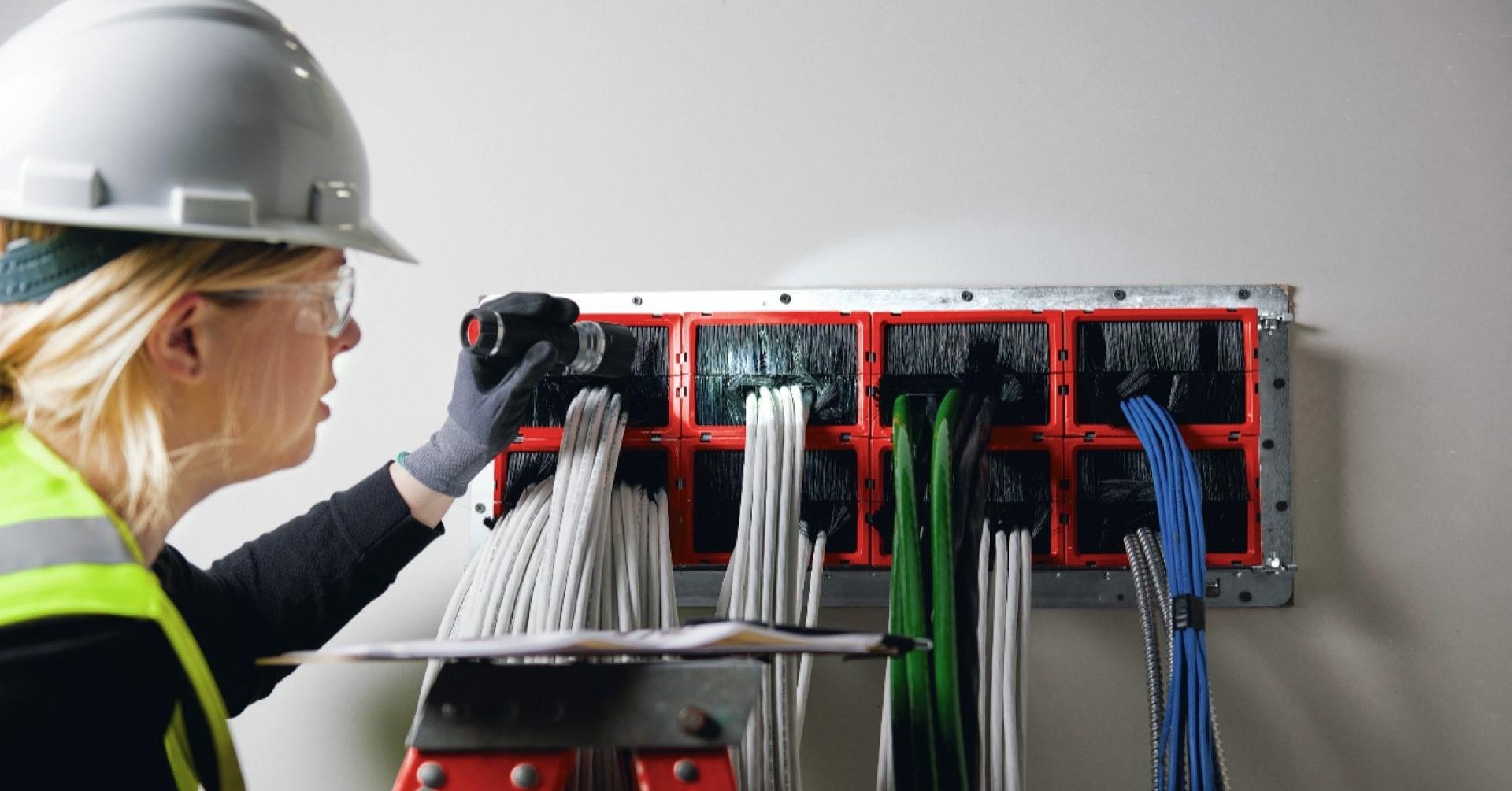Are you curious to know what is a firestop? You have come to the right place as I am going to tell you everything about a firestop in a very simple explanation. Without further discussion let’s begin to know what is a firestop?
In the construction and maintenance of buildings, ensuring safety from the threat of fire is paramount. Firestops, though not always visible, are a critical element of fire safety measures. These vital components help contain the spread of fire, smoke, and toxic gases, buying precious time for occupants to evacuate and firefighters to respond. In this blog, we’ll explore what a firestop is, how it works, and why it’s indispensable in the realm of fire protection.
What Is A Firestop?
A firestop is a passive fire protection system designed to seal openings, joints, and penetrations in fire-rated walls, floors, and ceilings. The primary purpose of a firestop is to prevent the passage of fire, smoke, and hot gases from one compartment of a building to another in the event of a fire. Firestops come in various forms, including fire-resistant sealants, putty, boards, wraps, and collars.
How Firestops Work?
Firestops work by creating a barrier that hinders the passage of fire and its associated dangers. Here’s how they function:
- Sealing Openings: Firestops are installed in openings and penetrations in fire-rated structures, such as wall and floor penetrations for pipes, cables, and ducts. These openings can act as pathways for fire to spread from one area to another.
- Fire-Resistant Materials: Firestops are typically made of fire-resistant materials designed to withstand high temperatures. These materials are capable of maintaining their integrity in the presence of fire.
- Expansion and Intumescent Action: Some firestops contain expansion materials that expand when exposed to heat. This expansion seals the opening and creates a barrier that prevents fire and smoke from passing through. Intumescent firestops work in a similar way by swelling when heated.
- Smoke and Toxic Gas Control: Firestops not only inhibit the passage of flames but also hinder the movement of smoke and toxic gases, which can be equally life-threatening in a fire.
- Maintaining the Building’s Integrity: Firestops play a crucial role in maintaining the structural integrity of fire-rated barriers. By preventing the spread of fire, they help ensure that the building’s fire-rated elements can withstand the fire as intended.
Get more information about cast on Starcasto.
Why Firestops Are Indispensable?
- Life Safety: Firestops are integral to ensuring the safety of building occupants during a fire. By containing the fire’s spread, they provide valuable time for people to evacuate and for firefighters to respond.
- Property Protection: Firestops help protect property and assets by limiting the damage caused by fire, smoke, and water used for firefighting.
- Compliance with Building Codes: Building codes and regulations require the installation of firestops in fire-rated construction. Compliance is essential to pass inspections and obtain occupancy permits.
- Insurance Requirements: Many insurance policies mandate the use of firestops as a fire protection measure. Compliance with these requirements can affect insurance coverage and premiums.
- Reducing Fire Spread: Firestops minimize the potential for rapid fire spread, helping prevent extensive damage and costly repairs.
- Limiting Smoke and Gas Inhalation: In addition to fire containment, firestops also limit the spread of toxic gases and smoke, improving the chances of survival in a fire.
Conclusion
Firestops are unsung heroes in the realm of fire safety, providing an effective barrier against the destructive force of flames and smoke. Their role in preventing fire from spreading through openings and penetrations in buildings is vital for safeguarding lives and property. As an integral component of fire protection systems, firestops are a testament to our commitment to enhancing the safety of our built environment, reducing the impact of fires, and saving lives.
FAQ
What Does A Firestop Do?
The term “firestop” can refer to either a fire protection system that seals openings and joints in fire-resistant walls or floors, or the individual pieces of that system. These systems got their name for a reason, since their sole purpose is to stop the spread of fires in buildings.
What Is A Fire Stopping Material?
Firestopping materials are products that form permanent seals that plug gaps, no matter how small, between fire compartments. Fire stopping materials include things like specialist foam, fillers, sleeves and collars.
Where Can I Use Firestop?
These easy-to-install products are suitable for a wide variety of firestop applications, including plastic pipes, metal pipes, HVAC ductwork, cables, construction gaps, grease ducts, wall tops and control joints.
What Are 4 Locations That Require Firestopping?
Fireblocks are required between floors, between a top story and a roof or attic space, in furred spaces or the cavities between studs in wall assemblies, at connections between horizontal and vertical spaces created in floor joists or trusses, soffits, drop or cove ceilings, combustible exterior wall finishes and …
I Have Covered All The Following Queries And Topics In The Above Article
What Is A Firestop In A Wall
What Is The W Rating On A Firestop System
What Is A Firestop Submittal
What Is A Firestop Job
What Is A Firestop In A House
Firestop Products
What Is Fire Stopping In Construction
Fire Stops In Apartments
Fire Stop Spray
Firestop Systems
Firestopping Vs Fireproofing
What Is A Firestop
What does a firestop do
What are the three types of firestops
